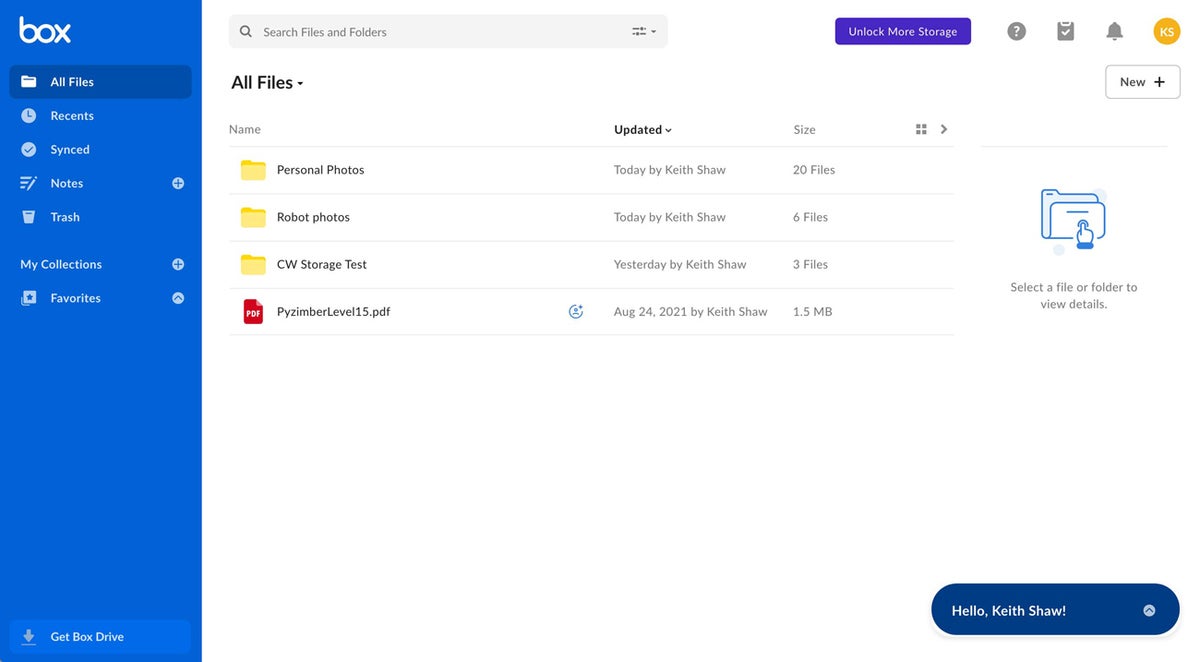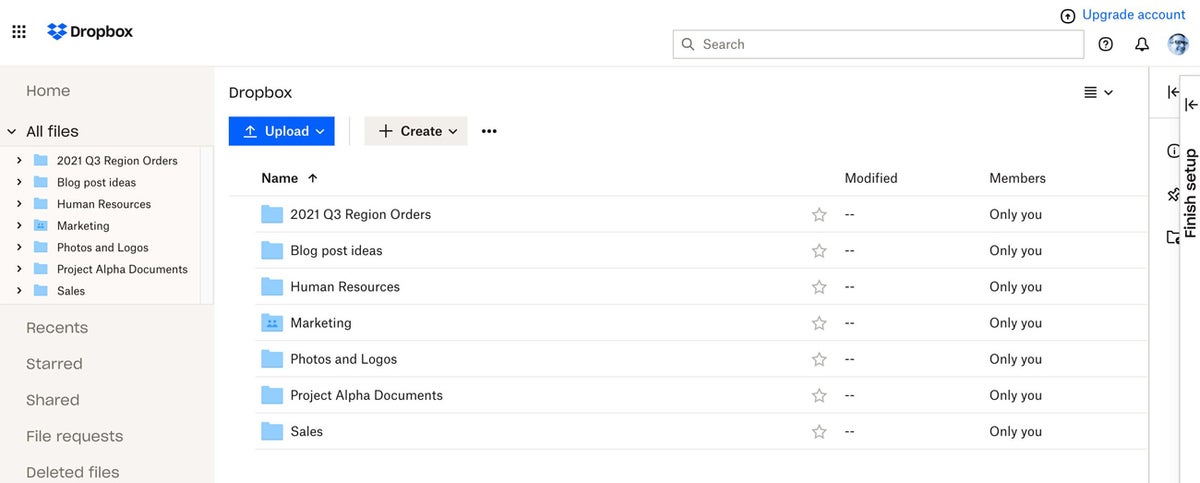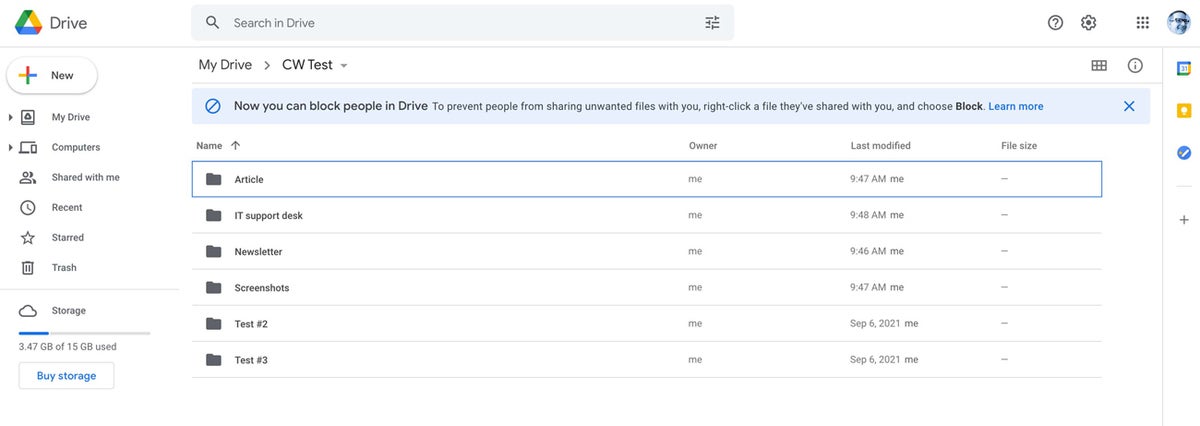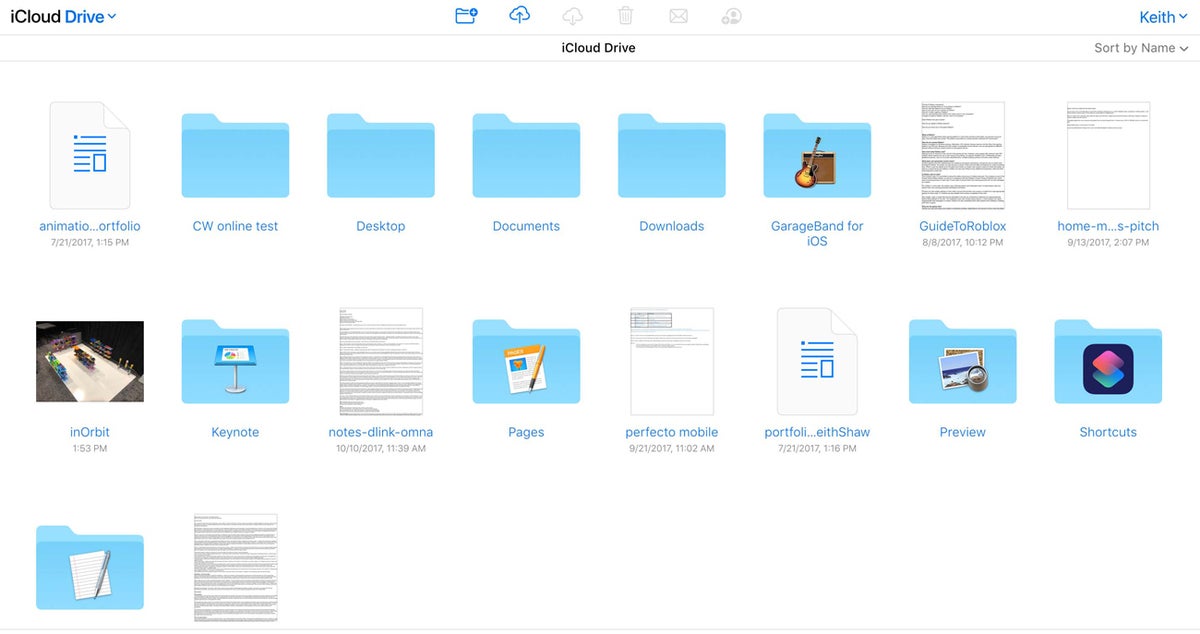Back in the pre-cloud days, sharing files involved using file transfer protocol applications or else copying files to a disc and then mailing it or walking it over to a colleague (affectionately known as ‘sneakernet’). Emails could also be sent (and many people still use email as their main “file-sharing” option), but size limits on attachments and security concerns discouraged this practice.
Today’s world of file sharing offers nearly endless options. Giants like Dropbox, Box, Google, Microsoft, and Apple, as well as smaller companies like MediaFire and Tresorit, all offer online cloud storage options that include file sharing, synchronization across multiple devices, and collaboration features. Once you have uploaded a file to one of these services, file-sharing is as easy as clicking a “share” button and then sending the link to a colleague via email. While most offer desktop and mobile applications, users can also upload, store, sync, and share files via a web browser.
The services we’ve chosen are listed here in alphabetical order and cover a range of options, from basic services for consumers to enterprise-level services. This is not an exhaustive list of all services, but rather a sampling of the big players and some lesser-known vendors.
10 top file-sharing services
• Box
• Citrix ShareFile
• Dropbox
• Google Drive
• iCloud Drive
• MediaFire
• Microsoft OneDrive
• OpenText Hightail
• SugarSync
• Tresorit
To check file transfer times for each, we uploaded a 245MB ZIP file using an internet connection with an average upload speed of 86 megabits/second. (See “How we tested.”)
Box
 IDG
IDG
(Click any image in this story to enlarge it.)
It’s nearly impossible to talk about Box without mentioning Dropbox (and vice versa), as the two are frequently pitted against each other. Box has always been geared toward businesses and enterprises, while Dropbox used to be largely focused on consumers and SMBs. But both services now include enterprise collaboration features and cloud content management via integrations with Google Workspace, Microsoft 365/Office 365, and many others, along with enterprise-grade security and management options.
There is a free plan for individudals that lets you kick the tires — it offers 10GB of storage, a 250MB file upload limit, and the ability to share these files with limited permissions. The file upload size limit is a bit strict if you are trying to share video files, but the 10GB storage limit is still pretty generous. Additionally, all of Box’s business plans offer a 14-day free trial.
Free account storage space: 10GB
Free account max file size: 250MB
Paid accounts: Personal Pro, 100GB storage, $10/month; Business Starter, 100GB storage, $5/user/month; Business, unlimited storage, $15/user/month; Business Plus, unlimited storage, $25/user/month; Enterprise, unlimited storage, $35/user/month; Enterprise Plus, unlimited storage, custom pricing. (All business plans require at least 3 users. Prices shown are for annual payments.)
Paid account max file size: Personal Pro, 5GB; Business Starter, 2GB; Business, 5GB; Business Plus, 15GB; Enterprise, 50GB, Enterprise Plus, 150GB.
Additional features with business plans: Built-in integrations with Slack (as well as Microsoft 365 and Google Workspace), plus 1 additional enterprise app integration; Box Sign (unlimited e-signatures via web app); Box Relay (workflow automation); data loss protection; two-factor authentication; SSO; Active Directory integration; other user management features. Higher-level plans offer additional enterprise app integrations; HIPAA/FedRAMP compliance; document watermarking; AI-powered threat detection; more.
Time to upload 245MB file: 35 seconds
Citrix ShareFile
 IDG
IDGShareFile, which Citrix acquired in 2011, creates a custom file-sharing site for your business, so you can share files easily with clients, partners, co-workers, and others. For example, your accountant might use ShareFile to securely share tax documents with you. The service offers lots of compelling features and tools for business users, including workflow management, document collaboration, e-signatures, and integration with Outlook and Gmail.
Security is robust, too, with enterprise-grade encryption and customizable permissions settings. The ShareFile dashboard makes it easy to add new users and toggle between personal and shared folders. Full-featured apps are available for Android, iOS, macOS, and Windows. There is no free plan, but you can try the Premium version for free for 30 days without having to enter a credit card number. The company also offers a virtual data room for 5 employee users, which offers advanced security, sharing, and control for sensitive data.
Free account storage space: N/A
Free account max file size: N/A
Paid accounts: Standard, unlimited storage, $50/month; Advanced, unlimited storage, $77/month; Premium, unlimited storage, $122/month; Virtual Data Room, 5GB storage, $338/month. All plans are for up to 5 employee users (additional employee user fees are $10–$24/user/month) and unlimited client users. (Prices shown are for annual payments.)
Paid account max file size: Standard, Advanced, and Premium, 100GB; Virtual Data Room, 5GB.
Other paid options include: Feedback and approvals workflow; activity logs; versioning; third-party integrations including Microsoft 365/Office 365 collaboration.
Time to upload 245MB file: 1 minute, 38 seconds
Dropbox
 IDG
IDGAs previously mentioned, Dropbox and Box are big players in the business market, offering enterprise-level security and management features as well as a healthy ecosystem of integrated third-party apps that make the services more robust. Both have continually evolved and improved to the point that, for most organizations, either one is a great option.
In recent years, Dropbox has been adding features aimed at boosting productivity and collaboration, such as the ability to create Microsoft Office or Google Docs/Sheets/Slides files from within Dropbox and a new shared Spaces interface for team collaboration.
To try before you buy, Dropbox’s free Basic plan for individuals offers 2GB of storage. A 30-day free trial is available for all business plans.
Free account storage space: 2GB
Free account max file size: No limit, but must be smaller than your storage space quota.
Paid accounts: Personal plans include Plus (1 user, 2TB storage, $10 per month) and Family (up to 6 users, 2TB shared storage, $17/month). Work plans include Professional (1 user, 3TB storage, $16.60/month); Standard (3+ users, 5TB storage, $12.50/user/month); Advanced (3+ users, unlimited storage, $20/user/month). For enterprise plans, contact Dropbox Sales. (Prices shown are for annual payments.)
Additional features with business plans: 180 days of file recovery and version history, 180-day history for Dropbox Rewind (recover from accidents/ransomware by reversing changes at folder or account level), remote device wipe, two-factor authentication, document watermarking, shared link controls, file locking, branded sharing, priority email support, and live chat support. Higher-level plans offer HIPAA compliance, an admin console, SSO integration, audit logs, more.
Time to upload 245MB file: 56 seconds
Google Drive
 IDG
IDGIf you’re already invested in the Google ecosystem, Google Drive is a no-brainer, since it integrates with Google’s productivity apps, such as Google Docs. Even if you don’t use other Google services, Google Drive is worth considering, as it gives users 15GB of free storage (shared with other Google services). Its rates are also competitive — 200GB costs individuals just $30/year.
With the Backup and Sync desktop client, you can choose which of your Windows or macOS computer folders to continually sync to Google Drive — you don’t have to keep files in a designated folder, as you do with some services. Permissions on shared files can get complicated — we’ve often shared a link with colleagues only to get a response saying that they can’t access the file. But once you can access a file, collaborating on documents in real time through Google’s other productivity apps is as good as it gets.
Beyond the 15GB free plan, Drive is available to individuals through a Google One plan. Businesses can opt for either a Google Workspace plan, which includes Drive, Gmail, Calendar, Docs, and other productivity/collaboration apps, or Workspace Essentials, which includes all of the above except Gmail and Calendar. A 14-day free trial is available for business plans.
Free account storage space: 15GB
Free account max file size: 5TB (with some exceptions)
Paid accounts: Google One plans for individuals: 100GB, $2/month; 200GB, $3/month; 2TB, $10/month; 10TB, $50/month; 20TB, $100/month; 30TB, $150/month. Google Workspace Essentials plans for businesses: 100GB per user/2TB pooled cloud storage, $8/user/month. Google Workspace plans for businesses: Business Starter: 30GB storage per user, $6/user/month; Business Standard: 2TB storage per user, $12/user/month; Business Plus: 5TB storage per user, $18/user/month; Enterprise (300+ users): unlimited storage, contact sales for pricing.
Additional features with business plans: Security and management controls, 24/7 phone and email support, centralized admin console, audit and reporting. Higher-level plans offer advanced endpoint management, data loss prevention, context-aware access, more.
Time to upload 245MB file: 48 seconds
iCloud Drive
 IDG
IDGAnyone who owns a Mac, iPhone, or iPad likely already has the free 5GB of online storage via iCloud that comes with the creation of an AppleID, and those users can share folders and documents with other iCloud users. Although Apple does offer an iCloud app for Windows, it’s likely that this mainly benefits Apple users who also use a Windows PC; we don’t really see people who are primarily Windows users signing up for an iCloud account to use the service, particularly because iCloud does not have an Android app. Android device users could access iCloud via the web app, but they would likely use Google’s online cloud storage to back up their photos and videos anyway.
As with other online storage services, users can set up iCloud to automatically back up and sync specific folders from their computer to their iCloud account, such as the Documents folder, Desktop folder, or others. Photos and videos from an iPhone or iPad can also be automatically synchronized. Using this feature can quickly eat up the 5GB of free space, so it’s likely that anyone using iCloud for such purposes would upgrade to a paid account. At $3 per month for 200GB, it’s still a relatively good bargain for the Apple faithful.
While iCloud users can use their personal accounts to share files with colleagues (and those files are encrypted in transit and at rest), this is essentially a consumer service.
Free account storage space: 5GB
Free account max file size: 5GB in theory, as long as it doesn’t exceed storage limits.
Paid accounts: 50GB, $1 per month; 200GB, $3/month; 2TB, $10/month. Apple allows these plans to be shared with family members (up to five other members). Those who subscribe to Apple services such as Apple Music or Apple TV+ may also be able to save money through Apple One bundling.
Paid account max file size 50GB, as long as it doesn’t exceed storage limits.
Additional features with paid plans: Upgrading your storage amount doesn’t give you additional features, unlike with other online storage services.
Time to upload 245MB file: 1 minute, 56 seconds






![Computerworld slideshow: Top 10 file-sharing options [COVER]](jpg/cw_ss_top_10_file-sharing_options_3x2_2400x1600_00_cover-100811086-largebc86.jpg)